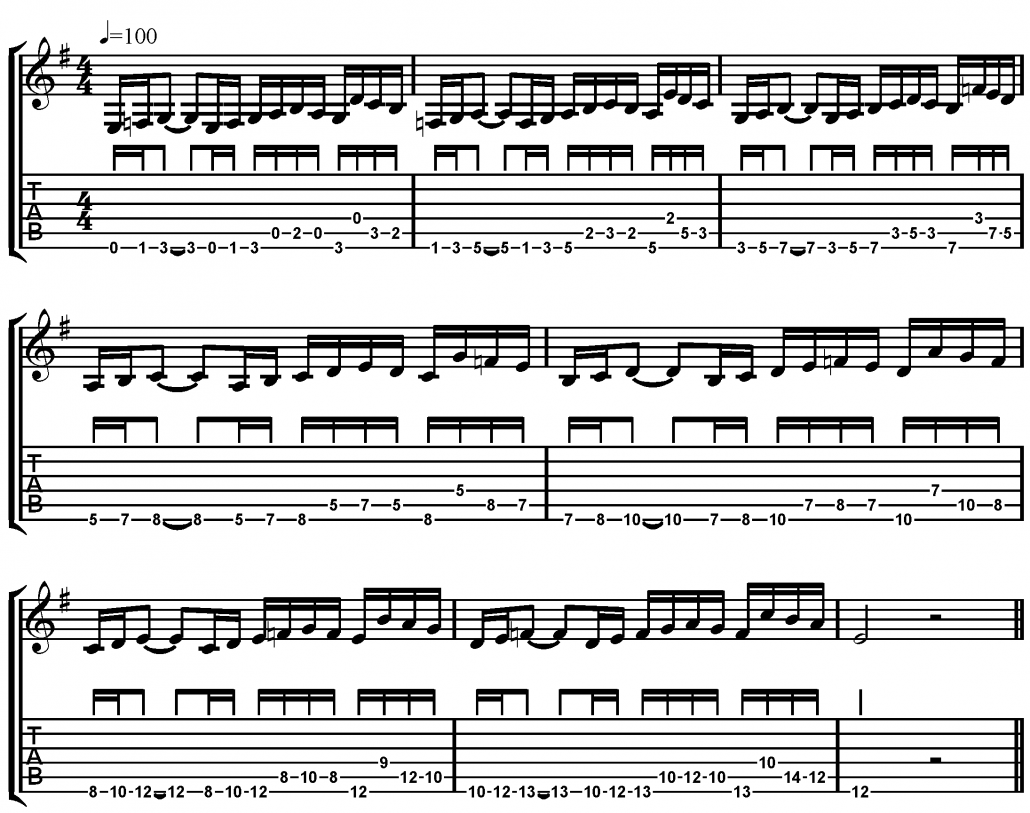Writing Better Metal Riffs – Sequencing
By Rob Thorpe
In today’s lesson, we’re going to look at using sequencing when writing rock and metal riffs.
Sequencing is the use of any kind of pattern, to provide a logical structure to the music.
Usually this means taking a melodic idea and then moving it through the different positions of scale, but sequences could be rhythmic, or even relate to the overall structure of a song. What makes sequences so effective in music is how they maintain the familiarity of repeating the initial musical idea while providing interest by changing the notes involved.
Ex 1
To demonstrate clearly what we mean by sequencing, our first example is very straightforward. It’s a simple rock riff using the A minor pentatonic scale. Starting on the root note we descend three notes in the scale, then descend again from the next note G etc to create the recognisable pattern.
The triplet feel synchronises with the descending sequence of three notes and points to the bluesy origin of hard rock and metal. If you use legato, be careful to get the timing as precise as if you were picking. The main concern for rhythm guitar is always timing!
Ex 2
Our second example uses a pattern of three notes in B natural minor but now the example is played with a straight feel. This means that the start of each group of three falls on a different part of the beat each time to create a commonly used cross-rhythm.
If you take some time to internalise the rhythm, you will start to feel both the three-note groupings and the 1/4 note pulse simultaneously. Accent the first note of each three-note motif and tap your foot on the 1/4 note pulse.
Ex 3
The final riff in this lesson is in the style of more progressive bands like Dream Theater. While our first two examples made sequences from short 3 note motifs, we’re now starting with a phrase in E Phrygian that lasts for a whole bar. With each repetition of the riff, it moves through different positions on the neck one scale step at a time. The initial phrase is adapted to fit the notes of the scale in each shape.
Practicing any riff in this way is great for your ability to understand the fretboard because it requires you to know the different positions (or shapes) of a scale relate to each other.
If you’ve enjoyed this lesson on metal riffs, be sure to check out my brand new book entitled Heavy Metal Rhythm Guitar which explores the techniques and theory to help you start writing your own metal riffs and features over a 120 audio examples with tab and notation!
“The artists you work with, and the quality of your work speaks for itself.”
Tommy Emmanuel
© Copyright Fundamental Changes Ltd 2025
No.6 The Pound, Ampney Crucis, England, GL7 5SA



